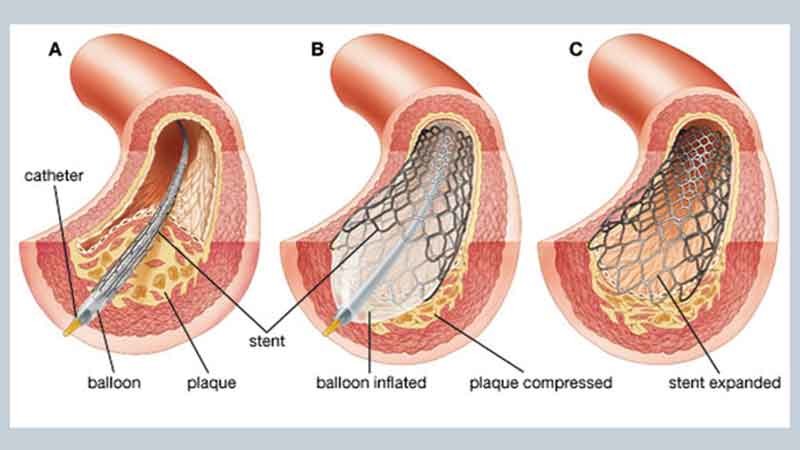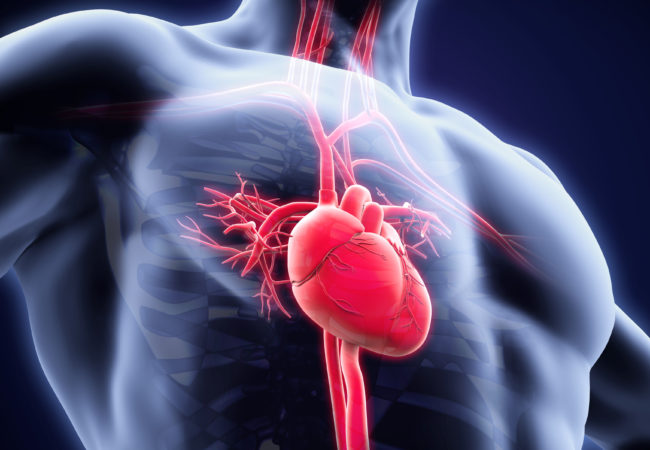Angioplasty is a minimally invasive procedure to widen the blocked arteries and veins of the body and it is also known as balloon angioplasty. It is mainly a treatment option for atherosclerosis, with this disease, fat plaques are deposited into your blood vessels and it can be deposited in both arteries and veins. With this method, a catheter and a balloon are inserted into your body through a blood vessel. Once the catheter enters your body, it is moved to the site of blockage; there the balloon is inflated to open up the clogged blood vessel. Sometimes, the balloon is inflated and deflated again and again to increase the diameter of the blood vessel.
Blocked blood vessels can pose a number of threats to your health and for example, coronary artery blockage can lead to severe chest pain, shortness of breath and ultimately to a heart attack. Coronary artery stenosis is the most common type of artery stenosis. Balloon angioplasty puts pressure on the vessel wall to open it up to increase the blood flow.

Also, see Coronary Angioplasty for the surgical procedure performed to widen blocked or narrowed coronary arteries.
Not everyone can be treated using angioplasty and some people have to go through surgery to get their narrowed vessels treated. Visit your health care provider to find out what can work for you, discuss your health history, expectations and pros and cons of the procedure before opting for it and patients with multiple blockages usually need surgery.
The Procedure
Contents
The Technique of the angioplasty is the same for every vessel and venous angioplasty is not that common. The point of insertion of catheter differs for each vessel but the rest of the procedure is almost the same. We will now explain the procedure for coronary artery angioplasty.
The procedure begins with angiography and the cardiologist will do an angiography to find out the exact site of the blockage. After this, you are sedated. General anesthesia is not given as it is a minimally invasive procedure. No large incision is needed for the angioplasty of any blood vessel. The area is cleaned with an antiseptic swab to avoid future problems and a small incision is made on the skin at the area where the femoral artery is present. The catheter with an attached wire is inserted into the artery and from the femoral artery, it travels into your body to reach the coronary artery. Once the catheter reaches there, a dye is introduced to get a clear angiograph of the blockage site. IV medicines and fluids are introduced into your body. Blood-thinning medicines are given to avoid clot formation and electrode pads are placed on your chest to monitor heart activity.
When the catheter reaches the site of the blockage you will get an uncomfortable feeling. The balloon attached to it is inflated there to increase the diameter of the blocked artery. The balloon is inflated and deflated several times to put pressure on the muscular wall of the vessel. When the plaque is removed, the catheter is pulled out of your body and the small incision is stitched and a bandage is applied over it.
Length of Stay in Destination
An Angioplasty procedure takes a different length of time for every artery. It depends upon a number of factors such as the size of the vessel, its type, etc. either it is an artery or a vein, number of blockage sites if it is performed under emergency condition, etc. It can take several hours. Once the procedure is completed, you are shifted to the recovery room. In the case of coronary angioplasty, if it is performed under non-emergency conditions, you can be discharged in a day. A longer stay is needed if you are an emergency such as a heart attack patient. During your stay at the hospital, your heart is continuously monitored. After you are discharged, you will have to stay in the Area for at least 14 days, during this time you will several follow up appointments with the doctor to ensure that nothing has gone wrong.
Recovery Time
Recovery time after an Angioplasty differs and is dependent upon the type of blood vessel and the purpose the body uses it for. For coronary angioplasty, only one week is needed for the recovery and you can get back to your routine. However, it will take more time to recover if the angioplasty is performed after a heart attack.
Aftercare
The following are some pointers for you to help yourself at home after an Angioplasty:
- Drink plenty of water and other fluids to remove the dyes from your body.
- Do not smoke and drink as tobacco and alcohol pose a lot of risks to your health.
- Follow a healthy lifestyle and ensure you exercise and walk daily.
- Eat healthily and avoid a diet which is rich in cholesterol because it deposits in blood vessels to form plaques.
- Do not indulge yourself in strenuous activities such as the gym, swimming, running, etc.
- Take care of the site where the catheter was given and consult with your doctor if you notice any swelling or bleeding.
Success Rate
Angioplasty procedure has had a tremendous success rate in previous years. Coronary stenosis, the success rate is 90% if it is performed to treat angina. In cases of both angina and heart attack under emergency condition, the success rate is good at 64%.
For an in-depth analysis of an Angioplasty Procedure, watch this short video.
Alternatives to Angioplasty
The following are the alternatives to an angioplasty:
- Medication: blood-thinning medicines are given to keep your blood thin. So that it may not form a clot, blocking the artery. Also, medicines are given to dissolve the plaques and if it does not work, angioplasty is advised.
- Stents: it is a small medical device that is placed in the narrowed vessel to increase its size. Unlike balloon angioplasty, it keeps the vessel open facilitating the blood flow and coronary stents are most common.
Before and After Angioplasty
You are suffering from atherosclerosis before the angioplasty. Vessel blockage can further lead to other health problems as coronary atherosclerosis can lead to chest pain and ultimately a heart attack. After angioplasty, the blood flow to the tissues is restored preventing you from having a lot of issues. It prevents heart attack in case of coronary stenosis.
To check prices or to book an Angioplasty Procedure in Thailand or anywhere else in the world, head on over to MyMediTravel now!

